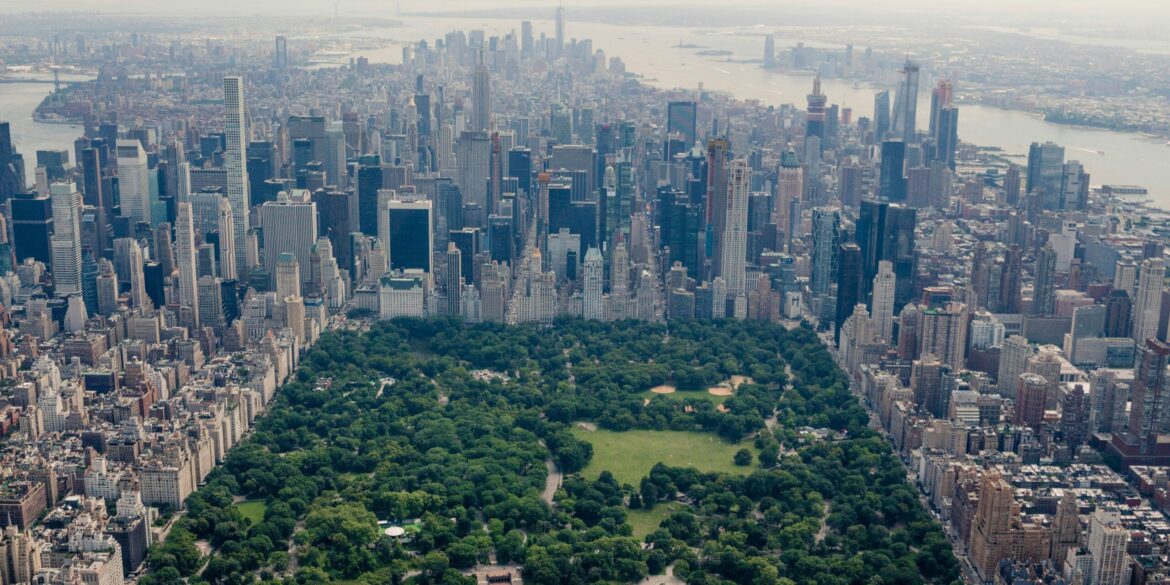New York City is ramping up its commitment to sustainability with an ambitious park overhaul project aimed at transforming its urban green spaces into eco-friendly models for the future. The initiative, which spans all five boroughs, is part of a broader effort to reduce the city’s environmental footprint and improve the ecological health of its public parks. The overhaul emphasizes water conservation, biodiversity, green energy, and overall environmental stewardship, marking a major step forward for the city in addressing climate change.
At the heart of this green initiative is a commitment to incorporating renewable energy and sustainable infrastructure across New York City’s parks. As part of the plan, the city’s parks department has started installing solar-powered lights in 15 major parks, with the goal of expanding this feature to all public parks by 2028. Solar energy, known for its low environmental impact, is a key focus of the project, reducing the need for conventional, energy-intensive lighting and minimizing the carbon footprint of public spaces.
The addition of solar-powered lights is not the only change underway. Another crucial component of the overhaul is the introduction of rainwater harvesting systems in parks. These systems will capture and store rainwater for use in irrigation, significantly reducing the reliance on potable water for park maintenance. This water conservation effort aligns with the city’s broader sustainability goals, especially in the face of increasingly unpredictable weather patterns and rising temperatures linked to climate change.
“The transformation of our parks into sustainable, climate-resilient spaces is essential as New York City faces the growing challenges of climate change,” said the Commissioner of the New York City Department of Parks & Recreation in a recent statement. “By enhancing green spaces with sustainable features, we are creating not just beautiful parks, but also spaces that contribute to the health and well-being of all our residents.”
In addition to energy and water conservation, the parks overhaul also focuses on promoting biodiversity and enhancing wildlife habitats. The city plans to introduce new green spaces that prioritize native plant species, which are better suited to the local environment and more resilient to changing climate conditions. These spaces will provide essential habitats for local wildlife, fostering greater biodiversity within the city. This initiative comes at a time when urban spaces are facing an increasing loss of natural habitats due to development, making it crucial to integrate nature back into city landscapes.
Environmental advocates have lauded the city’s green initiative, seeing it as a critical step toward creating more sustainable and livable urban environments. Experts point to the environmental benefits of these projects, particularly in addressing issues like the urban heat island effect. This phenomenon, caused by the concentration of heat-absorbing surfaces like concrete and asphalt in cities, leads to higher temperatures in urban areas compared to surrounding rural regions. By increasing green space and introducing features like green roofs, New York City aims to mitigate this effect, providing cooler, more comfortable environments for residents, particularly in the summer months.
Beyond the immediate ecological improvements, the city’s green initiative also holds long-term benefits for public health. The expansion of green spaces and the incorporation of sustainable infrastructure will help reduce pollution, improve air quality, and create spaces for recreational activities, all of which contribute to the well-being of city residents. These initiatives align with New York’s broader efforts to foster a healthier, more eco-conscious community, where sustainability is a central tenet of urban life.
Looking ahead, the city’s plans for the future are even more expansive. Larger green roofs are set to be integrated into both public and private buildings, offering more opportunities to combat the urban heat island effect while also promoting energy efficiency. Additionally, the expansion of bike lanes throughout the city is part of the broader vision to create more sustainable transportation options, reducing reliance on cars and promoting cleaner air.
For New Yorkers, these efforts represent a clear signal of the city’s dedication to creating a more sustainable, healthier, and environmentally responsible future. With the ongoing transformation of its parks and public spaces, New York City is positioning itself as a leader in urban sustainability, setting an example for other metropolitan areas to follow in the fight against climate change.
As the park overhaul continues to unfold, New Yorkers can look forward to more green spaces that not only enhance the beauty of their neighborhoods but also serve as essential tools in safeguarding the city’s environmental future.

